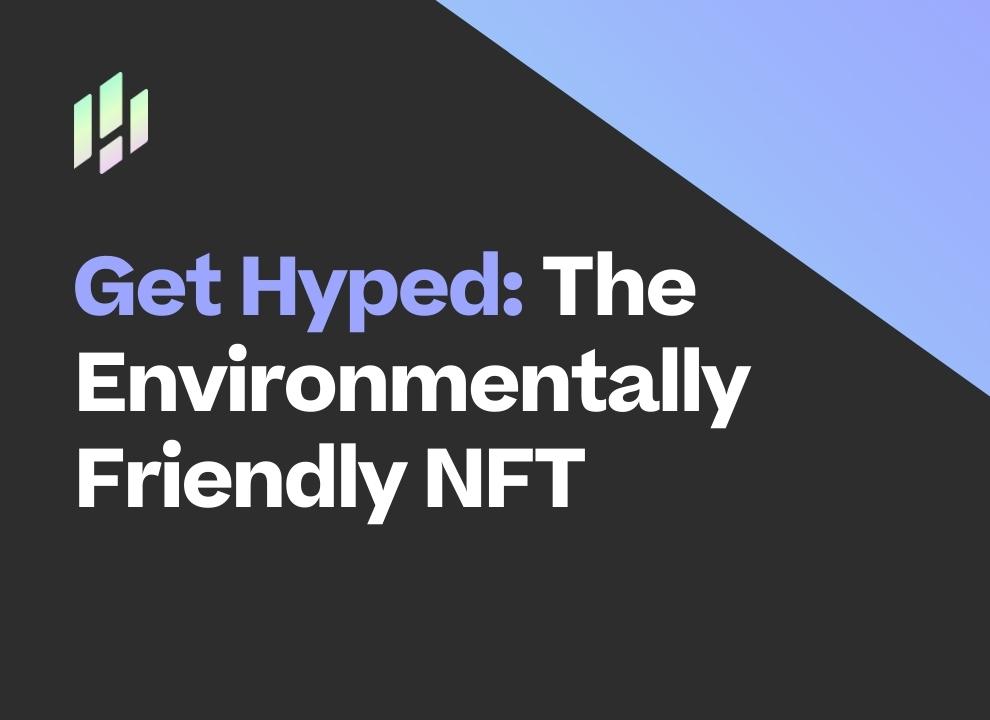Get Hyped: Why Hyprr is the Environmentally Friendly Choice for NFTs
Proof of Work, Proof of Stake, miner, validator. What am I on about and what’s this got to do with the environment? All will be revealed in this blog as we take a look at why Hyprr’s estimated annual energy usage is roughly 870,000 times less than other NFT platforms such as Ethereum.
Definitions:
“Proof of Work” and “Proof of Stake” are known as “consensus mechanisms”. They essentially are used to verify transactions, add them to the blockchain and create new tokens. As blockchain networks aren’t centralised, i.e. don’t have a bank or regulators controlling the activities, there must be some sort of ‘consensus’ reached to make sure no one spends the same money multiple times.
So what exactly are ‘Proof of Work’ and ‘Proof of Stake’ mechanisms?
Imagine your maths homework is due tomorrow. You have an impossible equation that needs solving. It's 9:45pm, bedtime is 10pm. You decide the best way to get it solved is to pay someone to do it, so you open it up to the online world. Money is offered to the fastest person to solve it and so the competition begins and multiple brains around the world start whizzing to solve the equation.
This is the Proof of Work (PoW) mechanism. Sort of. In NFT terms, a mathematical equation needs solving in order to validate a new block in the blockchain (where the NFT is stored). PoW involves a competitive race, where ‘miners’ race to answer the equation, which validates the block so it can be added to the chain. The miner receives the block reward set for that particular crypto currency. Bitcoin was the first to use this mechanism and currently the block reward for mining 1 bitcoin is 6.25 bitcoin (£287,834.32).
So why is Proof of Work environmentally damaging?
Back to the maths homework analogy - imagine all the brainpower involved in multiple people trying to solve the equation, when only one person gets the reward. Similarly with PoW, a huge amount of processing power is used by the computers the miners use, in the race to solve the equation first. With such large amounts of electricity, a huge carbon footprint is generated collectively as more and more miners join the race to earn the reward. Bitcoin uses more energy than the whole of Argentina, through the PoW mechanism, so we’re talking some pretty high numbers.
Is Proof of Stake environmentally better?
It is indeed. Proof of Stake (PoS), which we use for our blockchain here at Hyprr, is the most popular, environmentally conscious, alternative. Now imagine instead of offering money to whoever can answer your maths problem first, an algorithm selects someone to solve the problem for you, based on how many problems they have successfully solved in the past. Much less brain power is wasted, and only one person needs to concentrate on solving the equation. This is similar to PoS.
In crypto terms, the person chosen to solve the equation is a ‘validator’. Leaving computers on for all hours of the day is no longer necessary as only one validator is chosen. The ‘stake’ part of ‘Proof of Stake’ refers to the crypto that validators need to invest into the network, which can be used as insurance to make sure the validators don’t forge any transactions. You can lose your stake from acting maliciously, and your odds of being chosen to produce the next block in the chain increase with the quantity of crypto you have staked. Similarly to PoW, there’s a fee that validators get paid once successfully submitting a valid block.
How much energy saving are we talking?
Well, a picture speaks a thousand words…
So set up your Hyprr wallet today, and reap the NFT rewards for a fraction of the environmental impact.
Did you like the article?
Share with friends
